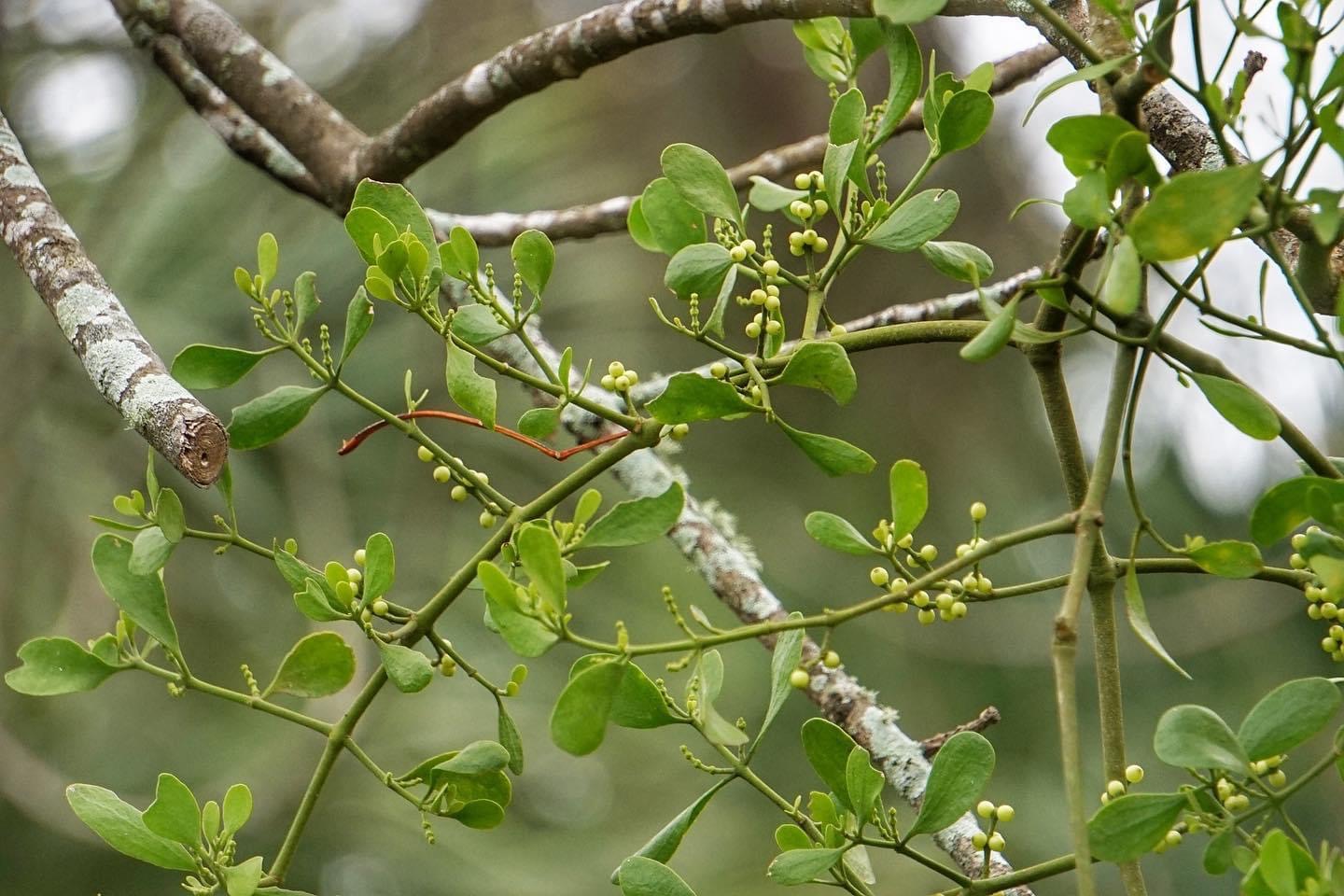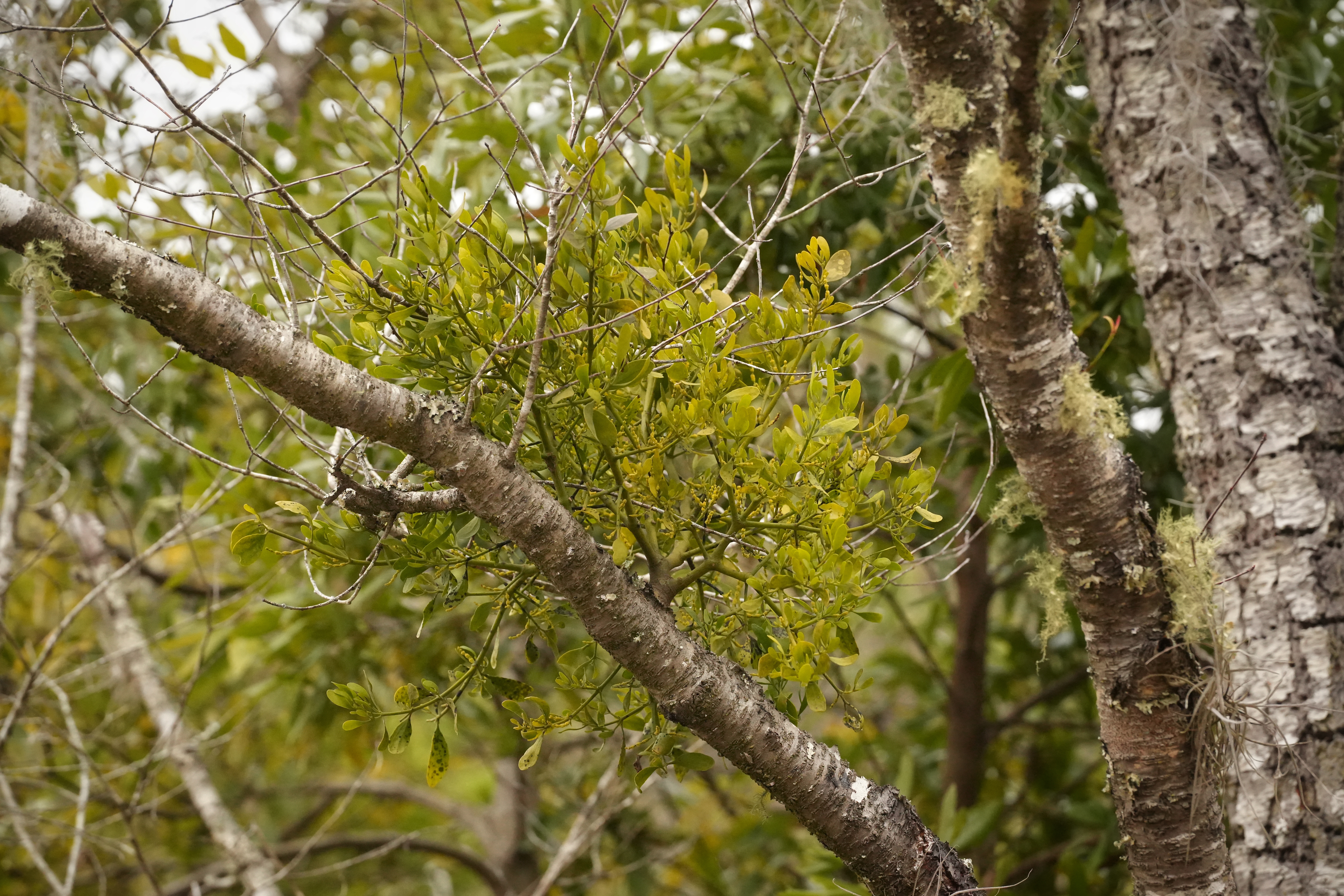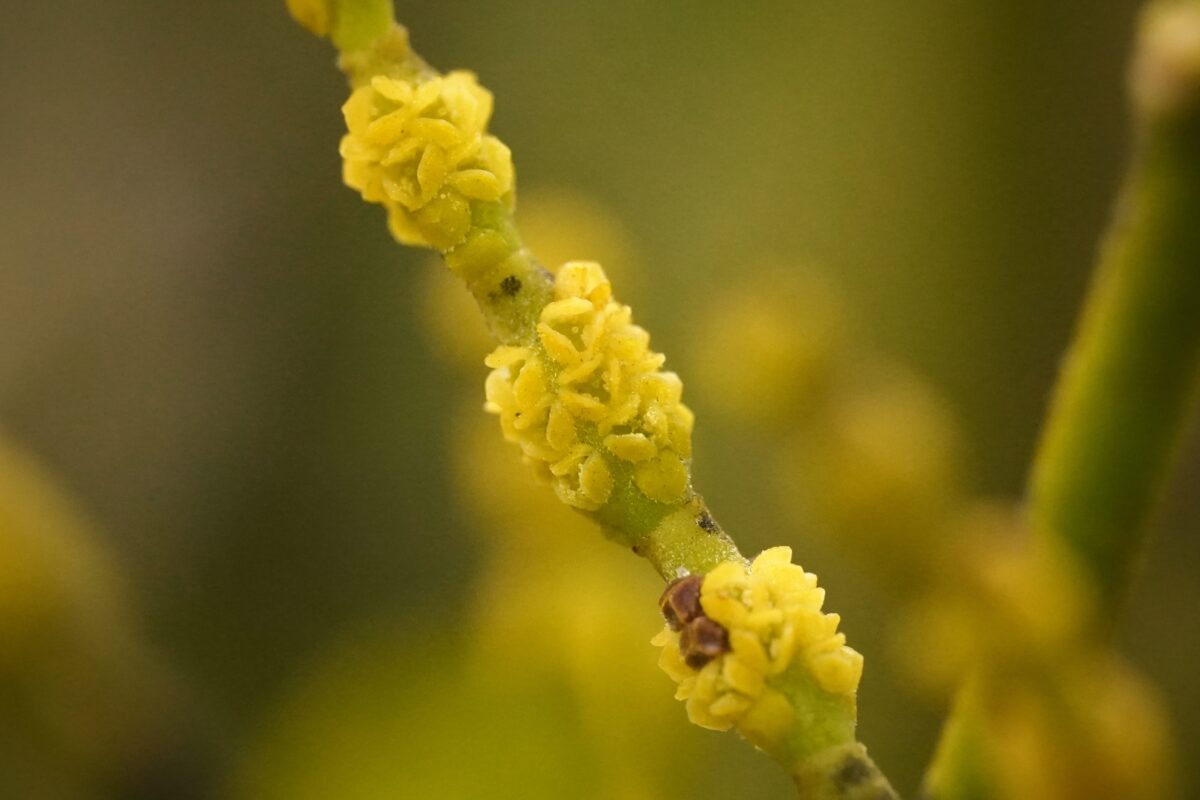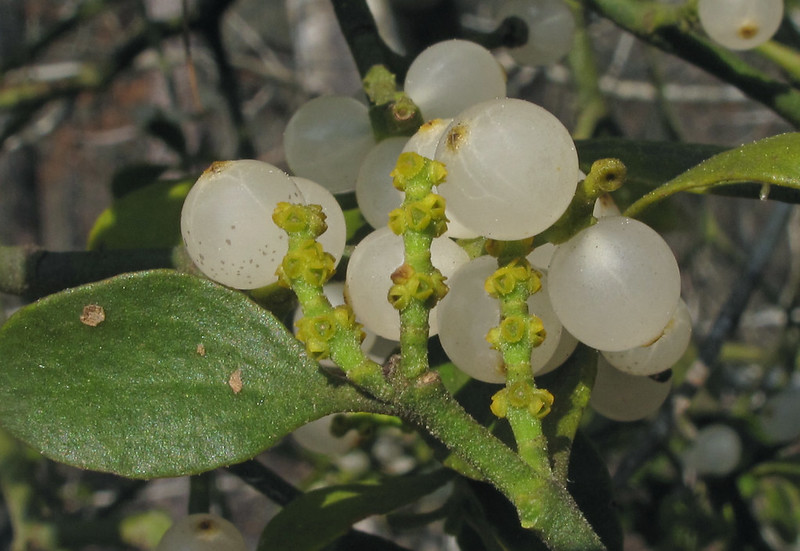Oak mistletoe
Pictured above: Oak mistletoe (Phoradendron leucarpum) by Emily Bell. Click on terms for botanical definitions. View post as a PDF.
Although it grows year-round, winter is the easiest time to spot Oak mistletoe (Phoradendron leucarpum) as its evergreen leaves stand out amongst the leafless deciduous trees it inhabits. (And yes, this is the very same plant associated with the amorous holiday kissing tradition.) Oak mistletoe is hemiparasitic, meaning that while it does produce some of its own resources through photosynthesis, it also relies on its host for water and minerals. This survival strategy is referenced in the Genus name Phoradendron, derived from Greek phor, meaning “a thief,” and dendron, meaning “tree.”
The oppositely arranged leaves are light green, leathery and oval to lanceolate. Stems are hairy and green to grayish or yellow-green. Tiny yellow 3-petaled flowers are born in axillary clusters. Fruits are white and globose.
Oak mistletoe has a fascinating life cycle, beginning with its fleshy and sticky white fruits. Produced in winter, they are an important food source for many birds, notably Cedar waxwings and bluebirds. The birds spread the sticky seeds through their droppings or by wiping the fruits off their beaks onto branches which then adhere to the wood and germinate. The plant sends a root-like feeding organ called haustoria into the tree’s tissue where it absorbs water and nutrients. Host trees commonly include Laurel oaks, elms, hackberries, sycamores, and wild cherry trees. Typically, Oak mistletoe does not kill its host. In addition to supporting birds, the flowers attract a variety of pollinators and it is a larval host plant for the Great purple hairstreak butterfly.
NOTE: The berries are very poisonous and have been known to cause seizures or death when ingested. They can be especially lethal to children and pets.
Family: Viscaceae (Christmas mistletoe family)
Native range: Throughout Florida, with exception of the southern most peninsula and the Keys
To see where natural populations of Oak mistletoe have been vouchered, visit florida.plantatlas.usf.edu.
Lifespan: Perennial
Exposure: Full to partial sun
Growth habit: Subshrub
Oak mistletoe plants are not commercially available. Visit a natural area to see them.




